How to Perform a Color Analysis Using ChatGPT

Key Takeaways
- Color analysis tells you how colors influence mood, fashion and your wardrobe or room. Using these insights can help your decisions feel more deliberate and aligned.
- Welcoming in both color theory and individuality allows you to create a palette that really represents you. Trying different shades can surprise and delight.
- Leveraging AI color analysis with tools like ChatGPT provides an easily accessible, swift source of style guidance, simplifying the process of discovering flattering hues and trends. Mix digital insight with your intuition.
- Great photos, color codes and nice prompts = accurate AI color analysis Recording your discoveries keeps you on a path to style evolution.
- Knowing the psychological effects of color can empower your confidence and self-expression. Experimenting with new shades can invigorate your style and recharge your attitude.
- Combining AI and traditional color analysis and personal discovery results in a more personalized and enjoyable experience. Be open to adapting your palette as your preferences and lifestyle shift.
ChatGPT color analysis utilizes AI to analyze and recommend color options from user prompts. It assists users in selecting color palettes for designs, attire, or branding motifs in an efficient and straightforward manner.
Visitors punch in their requirements, then receive concise advice or complete color schemes. A ton of people use it for graphic work, or web design, or just for their own style checking.
To find out more about how it works and when to use it, read on.
What Is Color Analysis?
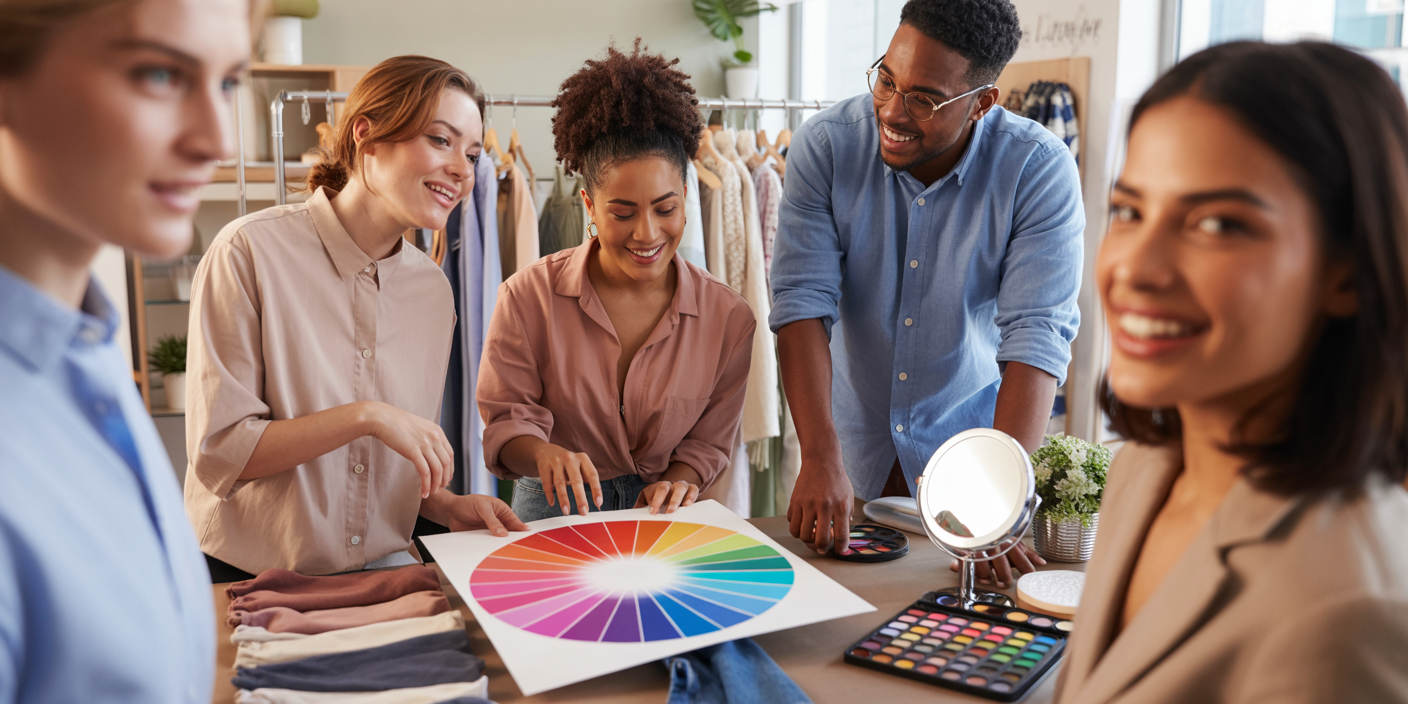
As real humans, color analysis is the exploration of how colors interact and how they define the way we experience, appear, and even behave in our environment. It assists individuals in determining which colors complement their complexion, hair, and eyes and can be applied to make wise choices when selecting an outfit or decorating a space.
Done by a human or an AI tool, it's about identifying colors that make your features pop and exude confidence and look like the best version of yourself in any given situation. Some find it spot on, others can observe discrepancies, especially when photos don't represent colors identically to the real world.
At its core, color analysis is simply about selecting what works for you and your style.
The Core Concept
The basics of color theory start with three primary colors: red, blue, and yellow. Combine these and you get secondary colors such as green, orange, and purple. Mix those and you arrive at tertiary hues. This straightforward system is the foundation of how artists, designers, and stylists view color, especially in the context of personal color analysis.
Put two colors next to each other and you have oxygen, a fresh emotional feeling. Red and yellow can feel effervescent, while blue and green tone everything down. Even in daily life, these combos mold our moods, illustrating the importance of understanding your seasonal color palette.
Personal taste counts for a lot. One person may adore striking reds, while another prefers soft blues. Color analysis leverages this to assist individuals in selecting colors that flatter their distinctive personal coloring, including their hair color and skin tone.
For instance, someone with warm skin tones would appear sparklier in earthy oranges, whereas cool skin tones would shine in icy blues. Discovering the perfect colors can transform a mediocre ensemble into something that just feels 'right' for your wardrobe.
The Seasonal Theory
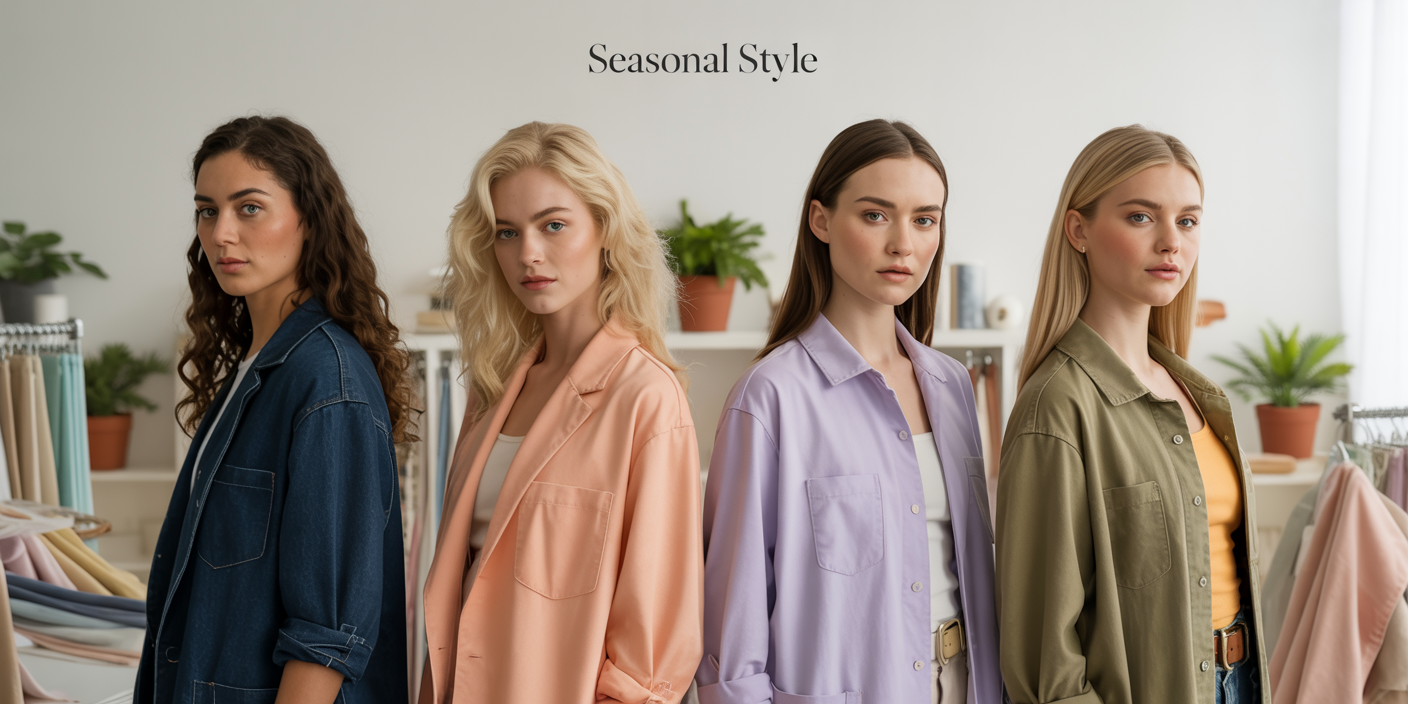
Seasonal color analysis categorizes individuals by skin tone, eye color, and hair color. There are four main categories: winter, spring, summer, and autumn. Each has its own palette of colors to flatter and harmonize.
- Winter: Cool, deep shades like navy, black, and pure white. These often feel crisp and bold.
- Spring: Warm, light colors like peach, coral, and bright yellow. They bring energy and freshness.
- Summer: Soft, muted hues such as lavender, powder blue, and soft pink. These evoke calm and lightness.
- Autumn: Rich, earthy colors like olive, mustard, and rust. These provide warmth and coziness.
Once you know your season, it can be a huge time saver and mental energy saver when shopping or planning outfits. It's basically a cheat sheet to what works best.
Beyond The Rules
Although seasonal palettes provide a fantastic jumping-off point, they're not the sole option. Trends are trendy and what's in today is out tomorrow, but your style is your style.
A lot of folks enjoy rule-breaking—combining hues that 'shouldn't' coordinate or experimenting with a tone beyond their customary repertoire. Some adore utilizing AI-powered tools for rapid palette recommendations, while others rely on their innate eye or enjoy collaborating with a stylist face to face.
The key is to experiment, have fun and discover what fits. Color analysis is a tool, not a bible.
The Rise of AI Color Analysis
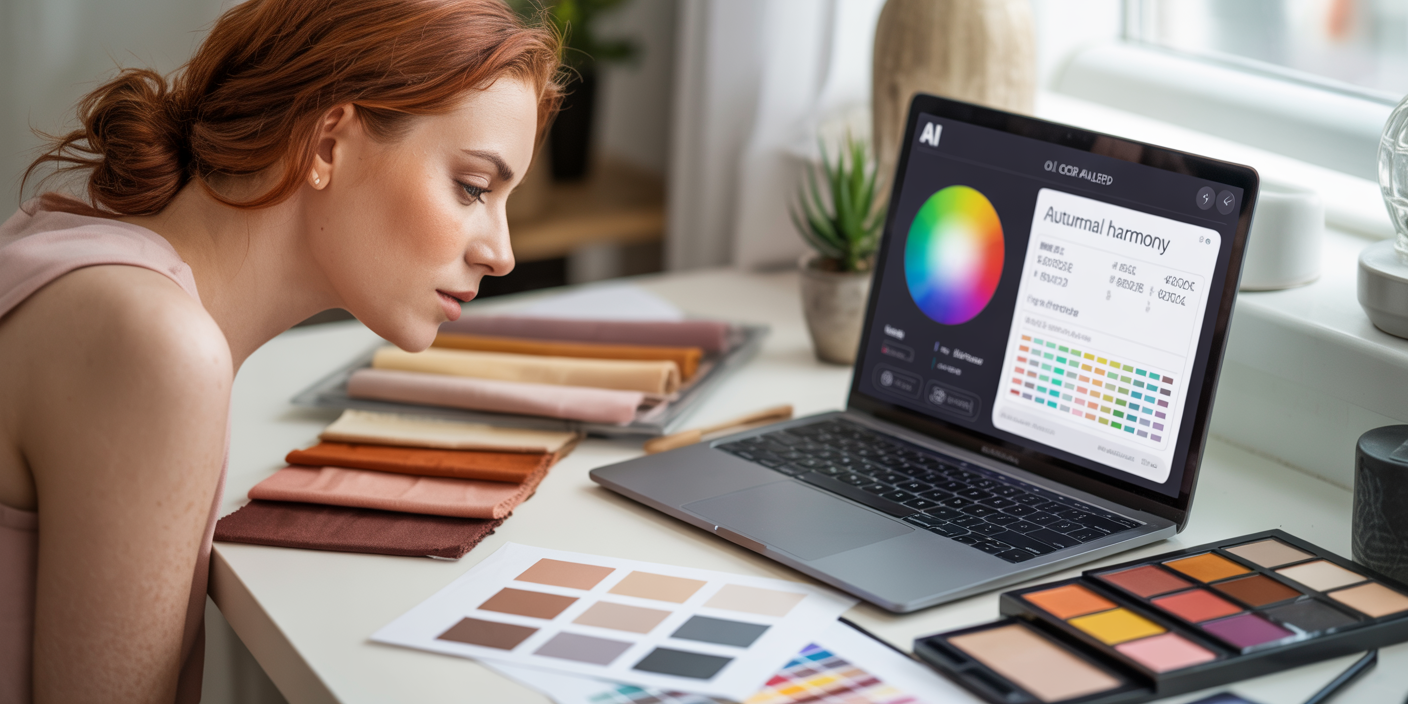
AI color analysis, from niche tool to global trend. It began to pick up genuine momentum throughout the pandemic, when salons and color specialists shuttered. Folk craved to discover which colours suited them; they simply needed new methods of doing so. That's when AI came in.
Today, industries — fashion, design, retail, even cosmetics — are using AI to read and break down colors at a scale and speed never before possible. The tech doesn't simply mimic traditional techniques. It refines the fundamentals of seasonal color analysis — which goes all the way back to the 1920s — making it richer and more personal.
Why AI?
AI can verify thousands of color samples in seconds, revolutionizing the way we approach personal color analysis. While humans can observe color transitions, AI scours hex codes for skin, hair, and eye coloring, processing data at record speeds. Where a human might spend hours or days comparing swatches, AI tools do this in the blink of an eye, making it easy to get answers exactly when they're needed, especially for those seeking their ideal seasonal color palette.
Precision is another huge advantage of AI in color analysis. It can detect subtle shifts in color—like the hint of turquoise in someone's gray eyes or a touch of gold in brown hair. Tools that transcend the traditional four seasons delve into 12 seasons, dividing each into Light, True, or Soft, providing individuals with a more specific fit. For instance, you could be classified as a Soft Autumn, not simply an Autumn, allowing for a more personalized color palette.
AI is ever awake, eliminating the need for a studio visit. Anyone with a phone or laptop can upload a selfie or input hex codes for their features. Within minutes, they receive a color report tailored to their unique characteristics. There are free and inexpensive apps available, though quality can vary as some track too few data points.
Given massive data sets, AI might identify color trends or patterns across multiple users, assisting brands in selecting new collections. It also helps individuals perceive trends in their own color preferences, making it easier to curate a wardrobe that complements their true colors.
The Human Element
With all this advancement, humans still count in the realm of personal color analysis. Human instinct adds a dash of sentiment and discretion that AI can't replicate. Color is emotional, deeply connected to culture, memory, and personality, which is why a professional color analysis can provide insights that a machine might miss. A human can read between the lines—hear inflection, observe body language, and steer a client toward the right colors that feel heartfelt and intimate.
AI can occasionally overlook emotion. It can't always explain why we're attracted to a color, or how a specific hue can energize us. That's where a real conversation comes in handy, making it feel a little less like a pop quiz and a little more like a chat about the perfect seasonal color palette.
The best results come when you mix both worlds. AI offers rapid profound insights, while humans bring imagination and soul. This equilibrium keeps color analysis intelligent and intuitive, ensuring clients can embrace their true colors effectively.
How to Perform ChatGPT Color Analysis
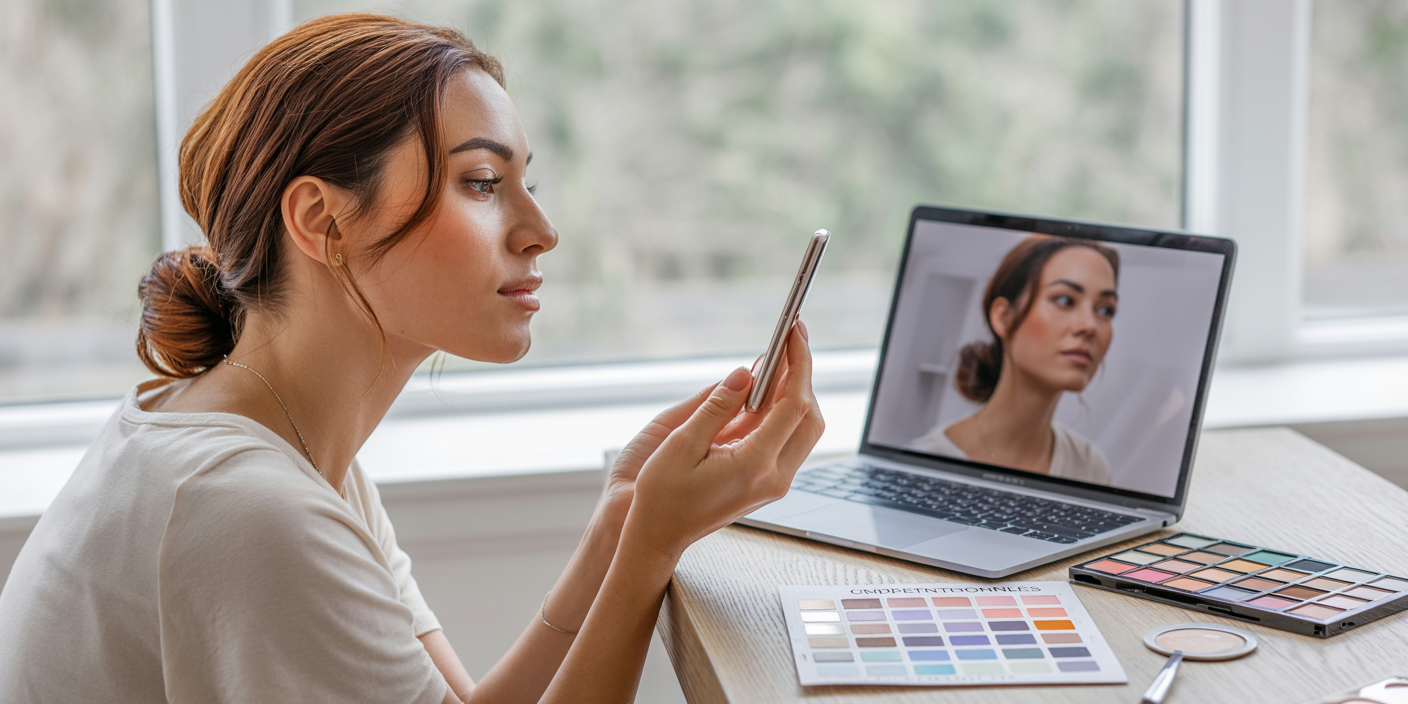
ChatGPT color analysis is a step-by-step method to discover your most flattering colors using AI's pattern recognition and feedback generation. It's great for anyone who's ever wanted to align their personal coloring to a seasonal palette—Spring, Summer, Autumn or Winter—without all the guesswork.
You provide information about your skin, eyes, and hair, and ChatGPT guides you through color options, eliminating the hassle and tension when selecting outfits and makeup. This is a malleable technique that transcends cultures and a category of outcomes that you can continue to refine as you discover new things about yourself.
1. The Perfect Photo
Photo quality is the first step for precise color analysis. Photos taken in natural light—say, by a window or outside on an overcast day—reveal the authentic hues of your skin, hair, and eyes. This is important as bad lighting, indoor bulbs, or filters can distort your true coloring, providing the AI with less to analyze.
Snap some from various angles. A front facing photo is great, but profiles or even just photos taken slightly from above provide a more complete sense of your coloring. Watch out for filters or beauty modes because those can tone down or change hues in ways that confuse both the eye and AI.
2. The Hex Codes
Hex codes are brief digital codes for each color, such as #DFC8B5 for light beige or #4B4137 for deep brown. They assist ChatGPT in 'seeing' your coloring without a photo, rendering the procedure more precise. You can extract hex codes from digital images through online color pickers.
Once you have your skin, hair and eye codes down, you can match clothing or makeup with greater confidence! For instance, Spring palettes could be peach (#FFDAB9), while Winter palettes gravitate toward navy (#003366). Store your favorite hex codes. This will facilitate future shopping or styling.
3. The Prompt
How you request assistance from ChatGPT determines the response. Be clear and specific: "My skin tone is #DFC8B5, my hair is #E2E3E0 and #1F1A18, and my eyes are #4B4137. What season am I?" Include information about your undertone or even add a picture if you can.
If you don't receive the answer you're seeking, experiment with another approach to your question. For instance, "What colors look best on me according to these hex codes?" or "Am I more cool or warm toned?" The more specific, the more helpful the response.
4. The Follow-Up
Once through the initial analysis pose more questions. If ChatGPT tells you that you are Summer, you can then ask it for a list of colors to experiment with or color combinations to wear to work or play. You may wish to determine whether into gold or silver jewelry.
Take notes on what you discover so you can refer back or identify trends. Experiment with fresh color combos and inquire anew—this can assist you in refining your palette.
5. The Interpretation
Take the read ChatGPT's feedback with a grain of salt. Other times the AI recommends a palette you'd never considered, like that one woman who always dressed in black but discovered Summer shades made her complexion glow.
Consider your lifestyle and how much you want to make a statement or be subtle. Keep in mind, colors signify various things in different cultures – red could mean luck somewhere, energy elsewhere. Take that insight to create your own color palette. Choose what works for you and fits your lifestyle!
Evaluating AI Color Analysis
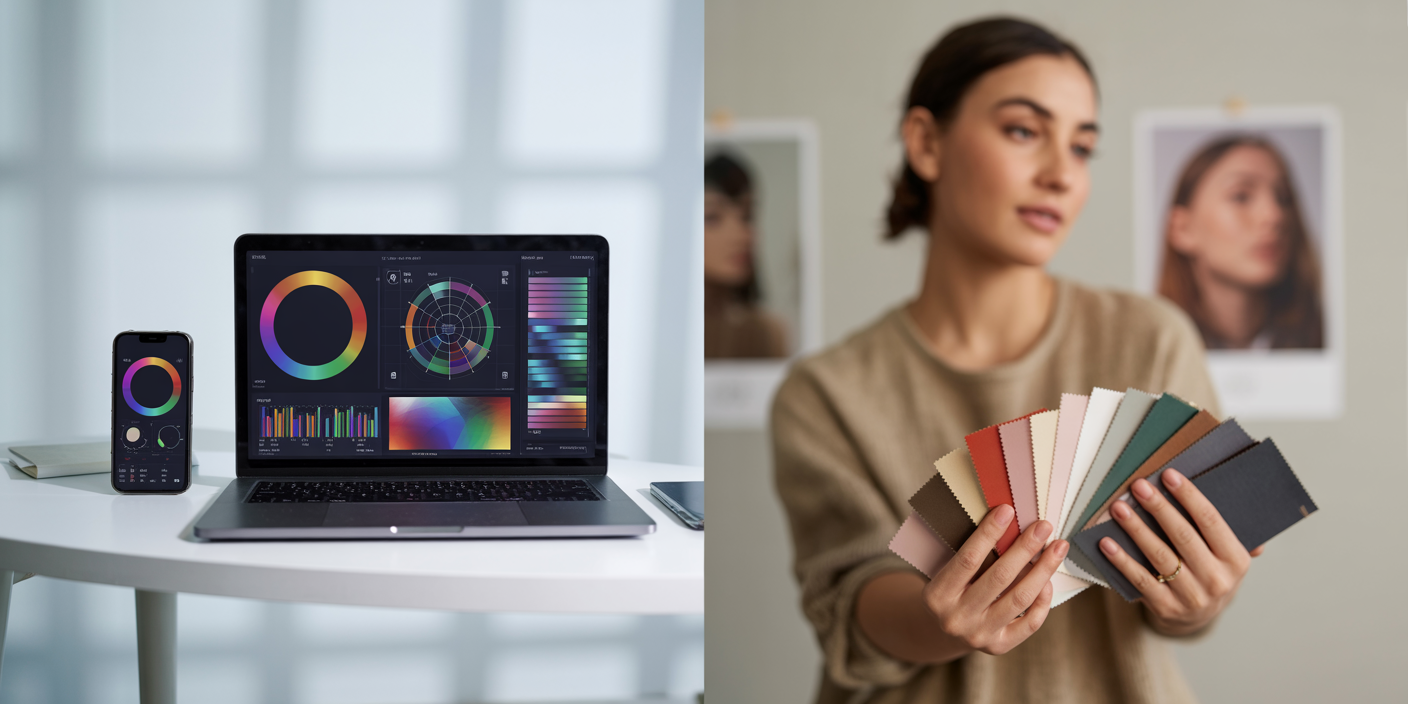
AI color analysis tools, such as ChatGPT-driven apps, are revolutionizing the way individuals engage in color selection for style, branding, and design. These tools make bold promises in an instant, but as we'll see, they have some obvious blind spots when it comes to comprehending the human element of color decisions.
The table below sums up the strengths and weaknesses of AI in color analysis:
| Strengths | Weaknesses |
|---|---|
| Fast processing of color data | Misses emotional nuance and personal context |
| Handles large, complex color datasets | Struggles with poor lighting or low-quality images |
| Consistent, repeatable results | Lacks personal touch and customization |
| Accessible anywhere with internet | Overlooks human perception complexities |
The Strengths
AI color analysis shines for speed and scale, particularly through personalized color analysis. A user can upload a selfie or input data and receive results in seconds, whether they're at home or mobile. This speed is unmatched by traditional approaches, which often require hours or days and generally an in-person meeting with a professional color analyst.
Being able to mine massive amounts of color data is another major advantage. AI can sort, match, and compare thousands of colors in a snap, making it an invaluable tool for determining your personal color palette. If you want to discover which shades complement your skin tone, for instance, AI can cross-check this against millions of existing color schemes, including variations like the autumn color palette.
It's convenient to access these tools. Anyone with a device and a connection can run them, democratizing color analysis. AI doesn't get moody, and its recommendations remain consistent, unlike humans who might perceive colors differently depending on mood or lighting, ensuring you find the right colors for your wardrobe.
The Weaknesses
AI sucks where the human touch matters most. Seasonal color analysis, for example, is not as simple as ticking the boxes for hair, eyes and skin. It takes into account how colors respond to one another and how humans react to them.
AI can't detect subtle nuances of warmth or coolness that a trained eye notices. It overlooks the individual narratives and feelings associated with color selections.
Bad lighting or cheap photos can mess with AI too. It could propose colors that sound nice but fight in reality. Unlike a pro who compensates for these things on the fly, AI just goes with what it sees.
There isn't much customization available. AI color palettes can feel generic. They don't necessarily coincide with individual preference or cultural color symbolism. A lot of users report these palettes assist as a jumping off point, but typically require a human expert to polish the guidance.
Too much dependence on AI means overlooking the human angle. A pro delivers soul, lived experience and artistic flourish—stuff no algorithm can replicate. For now, AI colors advice functions most effectively as a rapid complement, not complete substitution for human color specialization.
The Psychology of Your Palette
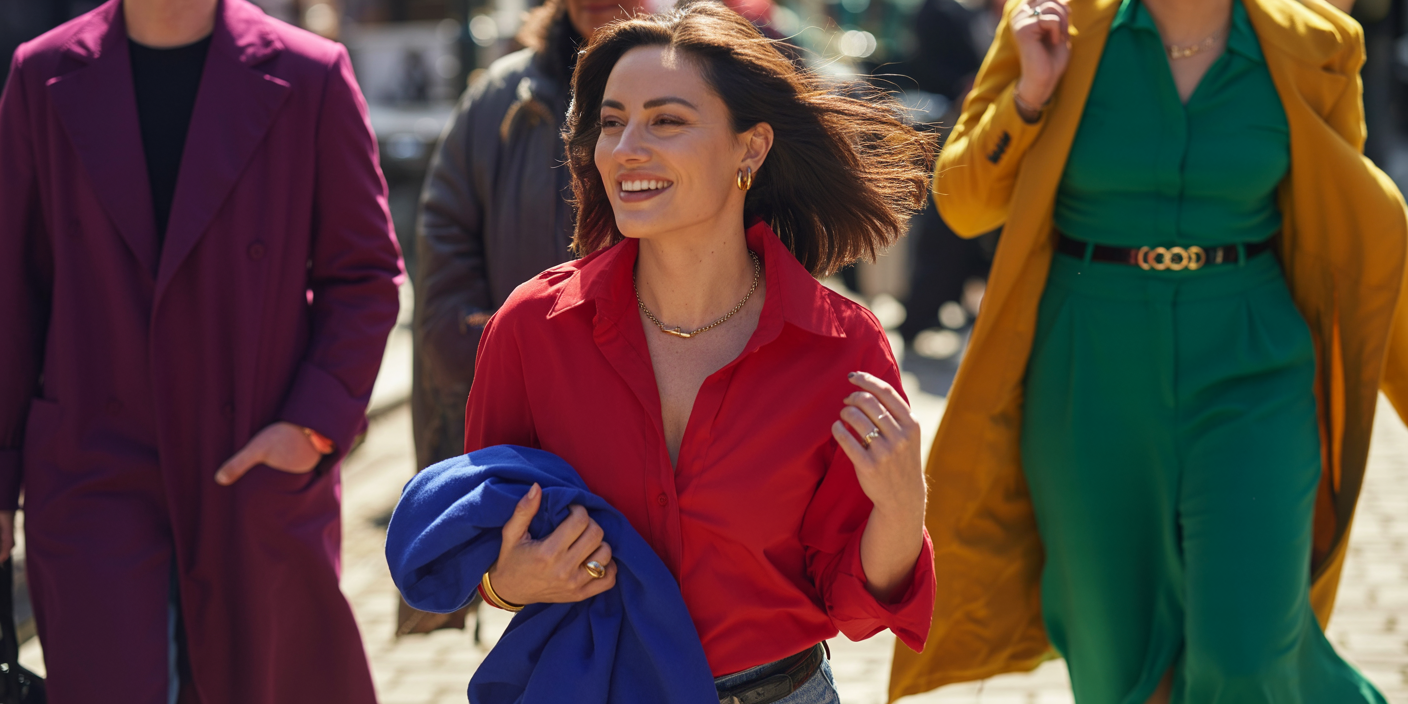
Color is more than fashion. It impacts our mood and perception by others. When we select shades that harmonize with our skin, eyes and hair, we tend to appear and feel more vibrant. The psychology of your palette is tied to these natural features, and understanding it can help us choose shades that suit us best.
AI tools can propose colors, but they bypass those nuanced qualities humans sense—such as how a color affects a person's mood or transforms under different lighting. Outside of science, our personal preferences and cultural significance imbue colors with even more strength.
Color and Confidence
A right color worn can make a day. A scarlet red shirt or cobalt blue scarf may make you feel powerful striding into that big meeting. Colors such as deep plum, navy, emerald green and rich burgundy are associated with confidence.
Certain individuals glow in gold/mustard, and others come alive in cool pinks or icy blues. Experimenting with vibrant colors, whether it's a neon sock or a quirky tie, allows us to express our authentic selves.
These selections can create dialogues and differentiate us. The manner in which a color influences our spirits, or attracts people to us, demonstrates the extent color influences our interpersonal cosmos.
Breaking Your Palette
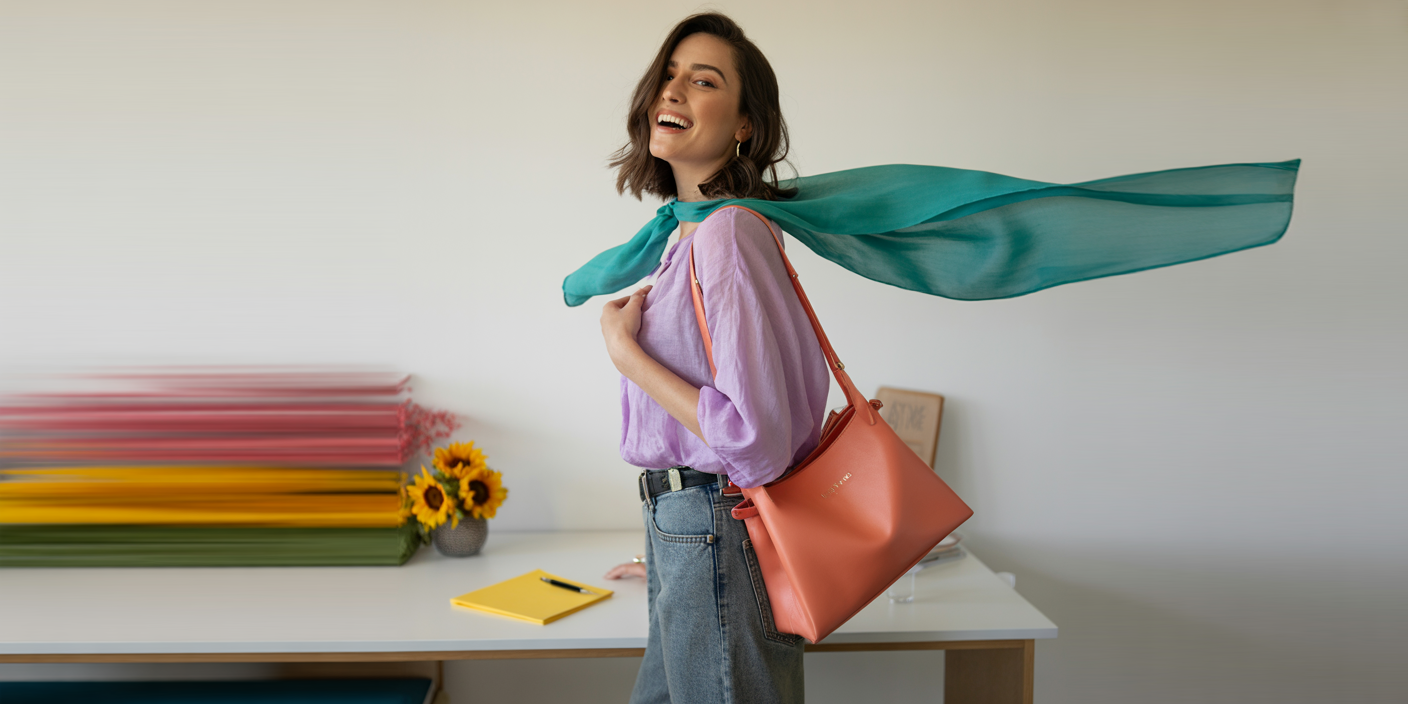
Taking a walk beyond the boundaries of safe colors can give us new favorites and new energy in our appearance. We tend to default to black, white or beige, but once in a while a burst of teal or coral can invigorate an outfit or a room. Mixing it up keeps style fresh.
- Begin with accents—test out a vibrant scarf or daring notepad.
- Team surprising shades with your fundamentals—lace a lilac top with timeless denim.
- Seek inspiration from nature—consider the color combination of a sunset or garden.
- Exchange one neutral for a color—olive instead of gray, soft peach in place of beige.
Style matures with us, and allowing new hues to seep in keeps it developing.
Evolving Your Colors
As we evolve, so do our favorite colors. What worked five years ago might not resonate now. Touching base with your color palette ensures it aligns with the person you are now and the season.
Seasons count as well—light hues often sparkle in the warmer months and richer ones in winter. Maintaining a color journal – even just a few notes or swatches – keeps tabs on what rings true and what motivates you.
This habit can reveal trends, inspire creativity and simplify experimentation.
Alternatives to AI Analysis

Color analysis isn't new. Pre–ChatGPT, pre-AI tools, humans have made countless attempts to determine the most flattering colors for their skin, eyes and hair. Some of the methods are really high tech, but most are straightforward and old-school.
A small excerpt from the table of old-fashioned techniques and why they're helpful:
| Method | How It Works | Benefits |
|---|---|---|
| Professional Analysis | A trained expert checks your skin, eyes, and hair in person | Personalized, detailed, often more accurate |
| Online Quizzes | Answer questions about features and get a suggested palette | Easy, quick, usually free |
| Color Swatching | Hold fabric swatches near your face to see what looks best | Hands-on, shows real effect of colors |
| Drawing/Manual Tests | Use colored pencils or apps to try out palettes on photos | Creative, lets you test lots of colors |
| Intuitive Testing | Notice which outfits or shades get the most compliments | Builds on real-life feedback and experience |
One of the great appeals to working with a professional color analyst is the richness of insight you receive. Others pay as much as $500 a session, praying for solutions that span a lifetime. They tend to analyze your skin tone, eye color and hair colour against natural light.
They peep for clues—like if your veins appear blue or green, or your skin glistens golden or pink. These pros employ their eyes and experience, not just algorithms. That trust and personal touch can go a long way, and people swear the results seem more "right" than what AI spits out.
Hands-on tools assist as well. By holding up fabric swatches – or even a piece of paper, you can immediately see changes in the colors. Occasionally you test a daring red or a subtle blue and sense the impact.
These moments stick, because you experience them in real life, not just on a screen. Doodle or color your picture, mix and match outfits– it's all part of the excitement. These approaches allow you to experiment, iterate, and adjust until it clicks.
Men also trust their guts. After years of donning colors, you begin to observe which hues bring out your eyes or make your skin glow. Friends may mention that you look great in green, or you may simply gravitate towards the same blue shirt over and over.
All these real-world signals can say a lot more than a virtual tag. AI tools are quick, but their outcomes can conflict–occasionally they even misassign skin tone groups. Users complain some results don't quite fit and the AI misses stuff a human would catch.
That's why combining AI insights with traditional approaches makes logical sense. You get the speed and scale of tech, along with the warmth and trust of human touch.
Conclusion
Color says a great deal, even before words appear. ChatGPT and other AI tools bring color analysis fast and simple to the masses. Folks are using these tools to sample new styles, select stylish palettes, or simply gain a better understanding of what colors match their aesthetic. AI provides a keen eye, but real eyes and human taste still resonate. Some people believe their intuition, some get down into the technology. Both UNM and CUNY work. Looking to find out what colors flatter you or wanting to experiment with a trend? Try color analysis, AI or your style. Share what you discover, exchange experiences, and keep the color conversation alive!
Frequently Asked Questions
What is ChatGPT color analysis?
ChatGPT's personalized color analysis uses AI to suggest seasonal color palettes based on user input, helping you discover your true colors, including shades like turquoise and golden yellow, that reflect your personality or mood quickly and easily.
How accurate is AI-powered color analysis?
Color analysis with AI is spot on for broad suggestions, especially when considering your personal color palette and seasonal color analysis. Your mileage may vary with data and AI restrictions, but expert advice remains top for personalized styling.
Can ChatGPT help me choose colors for my brand?
Yes, ChatGPT can recommend brand color combinations by utilizing a personalized color analysis that considers your brand values, target audience, and the emotions you want to evoke to suggest appropriate palettes.
Is AI color analysis suitable for all skin tones?
While AI color analysis aims for inclusivity, its accuracy in matching skin tones depends on the methods used, including personalized color analysis and seasonal color palettes.
What are the benefits of using AI for color analysis?
AI tools provide rapid, convenient and affordable color recommendations. They assist users to browse palettes without having detailed design expertise.
Are there alternatives to AI-based color analysis?
Sure, other options are to talk to color pros or experiment with online color analysis quizzes and palette generators. Each provides varying degrees of customization and specialist assistance in personal color analysis.
How does color analysis affect mood or perception?
Color affects emotion and perception significantly; for instance, blue can seem soothing, while red is invigorating. With the right colors from a personal color analysis, you can create a great effect on your surroundings or identity.